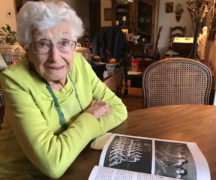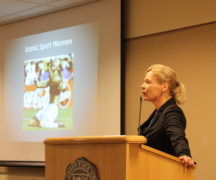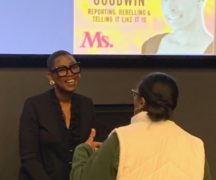By Susan Tebben
In a small unincorporated part of Licking County called Homer, there’s a historic marker unassumingly sitting in front of the town’s public library. The marker memorializes a Homer native who became a stock broker, a magazine publisher, and later a historic presidential candidate.

Photo courtesy of the Ohio History Connection
Victoria Claflin Woodhull lost the 1872 election to Ulysses S. Grant, but was the first woman to run for president, under the Equal Rights Party, who nominated abolitionist Frederick Douglass as her running mate.
Woodhull is one of many women setting the scene for progress in all aspects of American life, including politics, art and education.
It wasn’t until 1998 that Ohio would have its first African-American woman representative in the U.S. Congress, Stephanie Tubbs Jones. Born in Cleveland, Tubbs Jones founded the African American Students Association at Case Western Reserve University before becoming the state’s first Black prosecutor, elected to serve Cuyahoga County.
After Tubbs Jones’ sudden death in 2008, she was succeeded by fellow Clevelander Marcia Fudge, who held the post until earlier this month, when she became Secretary of the U.S. Department of Housing and Urban Development and the first Black woman to lead the agency in more than four decades.
Woodhull’s fellow Licking County native, Jerrie Mock, is heralded for beating Amelia Earhart to the punch in becoming the first woman to fly around the world. Jerrie Mock did so in 29-days aboard a single-engine Cessna named the Spirit of Columbus. The plane returned to its namesake city on April 17, 1964, having traveled 22,858 miles.
While the actual Cessna C-180 Mock flew on the trip is displayed in the Smithsonian National Air and Space Museum, a replica of the plan can be seen at Newark’s The Works.
Toni Morrison is well-known as a Lorain native and successful American novelist, having come from a working-class family to rise into a career in academia along with her 1988 Pulitzer Prize and 1993 Nobel Prize in Literature for novels about identity for Blacks in America. Her Nobel Prize made her the first African-American woman to win.
The judicial arena was changed because of Ohio women as well. Florence Ellinwood Allen was the first woman to be elected to any state’s supreme court when elected to the Ohio Supreme Court in 1922, after being the first woman in American history elected judicial office when voters put her in the Cuyahoga County Common Pleas Court. President Franklin Roosevelt then appointed her to the U.S. Court of Appeals Sixth Circuit in Cincinnati, making her the first female judge to be appointment.
Columbus’ Yvette McGee Brown became the first Black woman elected the Ohio Supreme Court in 2011.
Cincinnati has the Harriet Beecher Stowe house, which not only honors the author of the anti-slavery tome “Uncle Tom’s Cabin,” but also gives the history of her family, including more abolitionist, progressive women moving to change societal terms for Blacks and women.
Beecher Stowe, who’s house still serves as a museum and education center, joined anti-slavery movements after moving there at the age of 21, reportedly helping escaped slaves along the Underground Railroad.
But it was her mother Catherine Beecher who set her sights on the American education system, founding the Western Female Institute in 1832. She went on to found the Ladies’ Society for Promoting Education in the West, the Board of National Popular Education and the American Women’s Educational Association.





